Which Is Best for My Skin? Chemical Peel vs. Facial
- Posted on: Sep 20 2024
 At Forefront Dermatology, formerly Asarch Dermatology, we believe strongly in the power of professional treatment to keep skin healthy and younger-looking.
At Forefront Dermatology, formerly Asarch Dermatology, we believe strongly in the power of professional treatment to keep skin healthy and younger-looking.
Chemical peels and facials – two of the many spa services provided by our expert skin care team – can work wonders. But in the great chemical peel vs. facial debate, how do you decide which is best for your unique skin?
Thankfully, you don’t have to solve this mystery on your own. Your Forefront Dermatology dermatologist is here to guide you through every step of your skin care routine and thoroughly explain your treatment options.
For now, let’s take a closer look at chemical peels and facials, including how they work, what makes them different from one another, and how they can benefit you.
What is a chemical peel?
Despite the harsh-sounding name, chemical peels are one of the least invasive options available to significantly improve your skin’s appearance and address a variety of skin issues (including acne, age spots, fine lines, and wrinkles).
Some patients have mixed feelings about chemical peels due to the more aggressive peels of years past. Today, Forefront Dermatology, formerly Asarch Dermatology offers chemical peels for every skin type and tolerance, including sensitive skin. Most peels take less than an hour to perform, with minimal discomfort during treatment.
How chemical peels work
During a chemical peel, we apply an exfoliating chemical solution to your skin that causes the top layers to separate and eventually peel off – revealing the smoother, brighter skin underneath.
Types of chemical peels
Each type of chemical peel has its own particular ingredients and strengths. To exfoliate your skin and improve its texture, your Forefront Dermatology dermatologist may recommend a superficial peel that uses alpha-hydroxy acids (such as glycolic acid or lactic acid). For acne and other skin concerns, we may suggest a deeper peel that contains beta-hydroxy acids (such as salicylic acid).
Forefront Dermatology currently offers the PCA Skin line of peels, glycolic peels, and VI chemical peels. Ask your dermatologist for more details.
What is a facial?
Facials also rejuvenate your skin through exfoliation, along with other therapeutic components like cleansing, masking, extraction, and massage. Facials are excellent for removing unwanted buildup of dirt, oil, bacteria, and other pore-clogging debris. Facials also hydrate your skin, improve circulation, and encourage cell renewal, which helps reduce the signs of aging.
Like chemical peels, most facials take an hour or less to perform and are designed specifically for your skin type and tolerance.
How facials work
The specific steps of your facial will depend on which type of facial you choose. You can typically expect cleansing (to remove buildup), exfoliation (to remove dead skin cells), masking (to help exfoliate and clean pores), extraction (to remove blackheads), light massage of your face and neck, and more.
Types of facials
Forefront Dermatology offers numerous types of facials to soothe and revitalize your skin, including our signature facial, express glycolic facial, and deep cleansing clay treatment.
Vibraderm for men is a 30-minute power facial that stimulates collagen production. We even offer a teen facial for teens and young adults with acne-prone skin. Ask your dermatologist to learn more.
Differences between chemical peels and facials
When used properly, chemical peels and facials are both effective skin care treatments. The main differences lie in how patients view them and the skin issues they target.
Facials are often more popular than chemical peels because patients consider them to be less “invasive.” And it’s true – facials are all about cleansing and exfoliating the surface of your skin, while chemical peels involve using acid-based solutions to remove the damaged outer layers.
A facial may be an optimal choice if you want to pamper yourself and improve your skin’s appearance. However, if you want more drastic results or have more significant skin concerns, a chemical peel could be the way to go. Your Forefront dermatologist can help you weigh the pros and cons.
Benefits of chemical peels and facials
There are many benefits to regular facials, which most patients can get as often as once a week. If your skin is acne-prone, cleansing your pores and removing blackheads during the extraction process can lead to fewer breakouts. Having well-hydrated skin also greatly improves your skin tone and texture. Finally, facials are usually a very pleasant experience, providing you with a great opportunity to relax while you and your skin are pampered.
Getting a chemical peel once or twice a year also has a multitude of benefits. Chemical peels can typically target and treat certain skin concerns more directly than basic facials can, including dullness, discoloration, hyperpigmentation, and more. By removing the outer layers of your skin, chemical peels allow the healthier, younger-looking skin below them to emerge. You can usually see results right away after a chemical peel, although additional treatments may be required.
Skin care that revolves around you
Ultimately, the choice between a chemical peel vs. a facial comes down to your skin goals and personal preferences. The team at Forefront Dermatology is ready to advise you and develop a personalized treatment plan that meets your unique needs. (Want professional skin care products? We’ve got those, too.)
To get started, book an appointment online today.
Posted in: Skin Care
